All About Baby Deer (Fawns)
» Deer stories » Deer facts » All About Baby Deer (Fawns)This is Charcoal the fawn, she was born a few days ago to our oldest doe called Babushka. This photo was taken on day 2:
In this post, we'll answer some common questions about baby deer and share a few photos and video of Charcoal.
When Baby Deer Are Born
It is end of November (end of spring) in New Zealand and this is the beginning of fawning season for our fallow deer. In different parts of the world, for different deer species the exact time window for when fawns are born somewhat varies.
In northern regions, births occur in a narrower time frame because of the later timing of spring plant growth and because late-born fawns may not gain enough weight to survive the next winter. In southern regions, the peak of fawning is not as narrow and may be more influenced by the timing of summer rains in dry environments. In most of the Rocky Mountain states and western provinces, the majority of fawns are born in June.
In the southern deserts of Arizona and Texas, most fawns are born in late July and early August, while black-tailed deer in the Pacific Northwest can be born into September. [source - wildlife.utah.gov ]
Charcoal the fawn on her 1st day of life
Have You Stumbled Upon an Abandoned Fawn?
- who to call for abandoned baby deer?
- how to help abandoned baby deer?
- what can you feed an abandoned baby deer?
- abandoned baby deer what to do?
- what do you feed fawns?
- can fawns drink cow milk?
- can baby deer eat carrots?
These questions pop up every year during fawning season. People stumble upon a fawn in the woods and because it's lying there alone, they assume it's been abandoned by its mother or that she possibly died and the cute little thing is now orphaned. The truth is, this is how fawns are raised. They're supposed to be alone, sleeping for most of the time, and being visited by mother deer a few times.
Why? Because deer are prey animals and there's nothing a doe could do to protect her baby from most predators even if she was there, in fact, she'd endanger the baby further by attracting predators to her scent, being spotted by them visually. But while she can save herself by fleeing, the little fawn can not run very fast yet. So its best defense is 'laying low'. Blending in with the ground or hiding in the bush, sleeping and growing stronger with each new feeding session mother is providing.
Case in point, our deer Babushka, who is quite tame. She's given birth in the paddock close to our house and we're able to watch what's happening. The fawn always has to stay away from her, she won't let her sleep by her side, and the fawn's not insisting really, it's constantly looking for a hiding spot to collapse there. Here's a top notch shelter Charcoal has found:
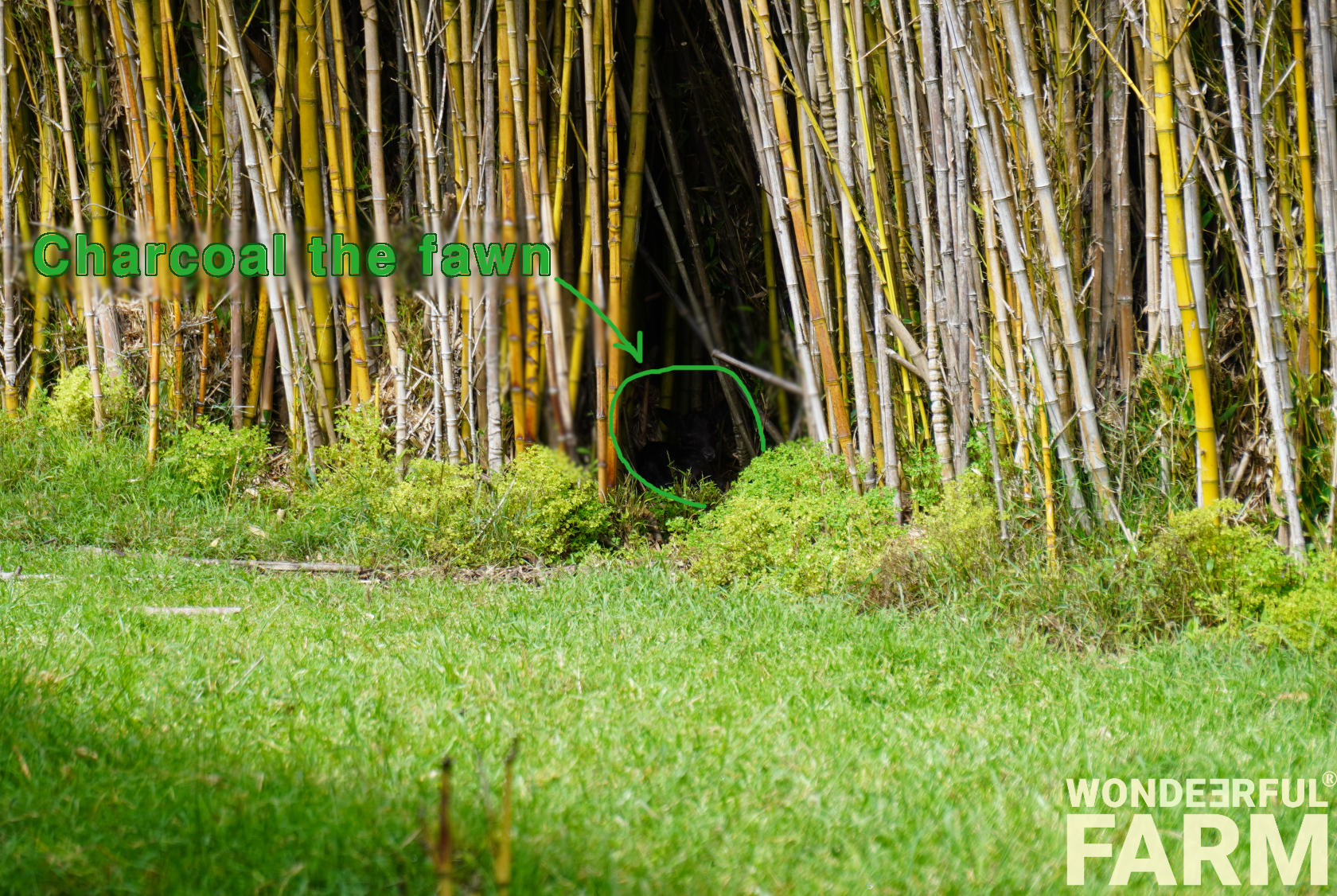
Babushka, the mother, stays about 10-40 meters away at all times, constantly checking if the site where her baby is hidden appears safe, listening to any sounds more carefully than usual. When she's ready she approaches the little thing and softly calls on it to come have a feed.
Charcoal the fawn on day 3, second favorite hiding spot
Here's an infographic for quick guideline if you encounter a lone baby deer from SPCA:
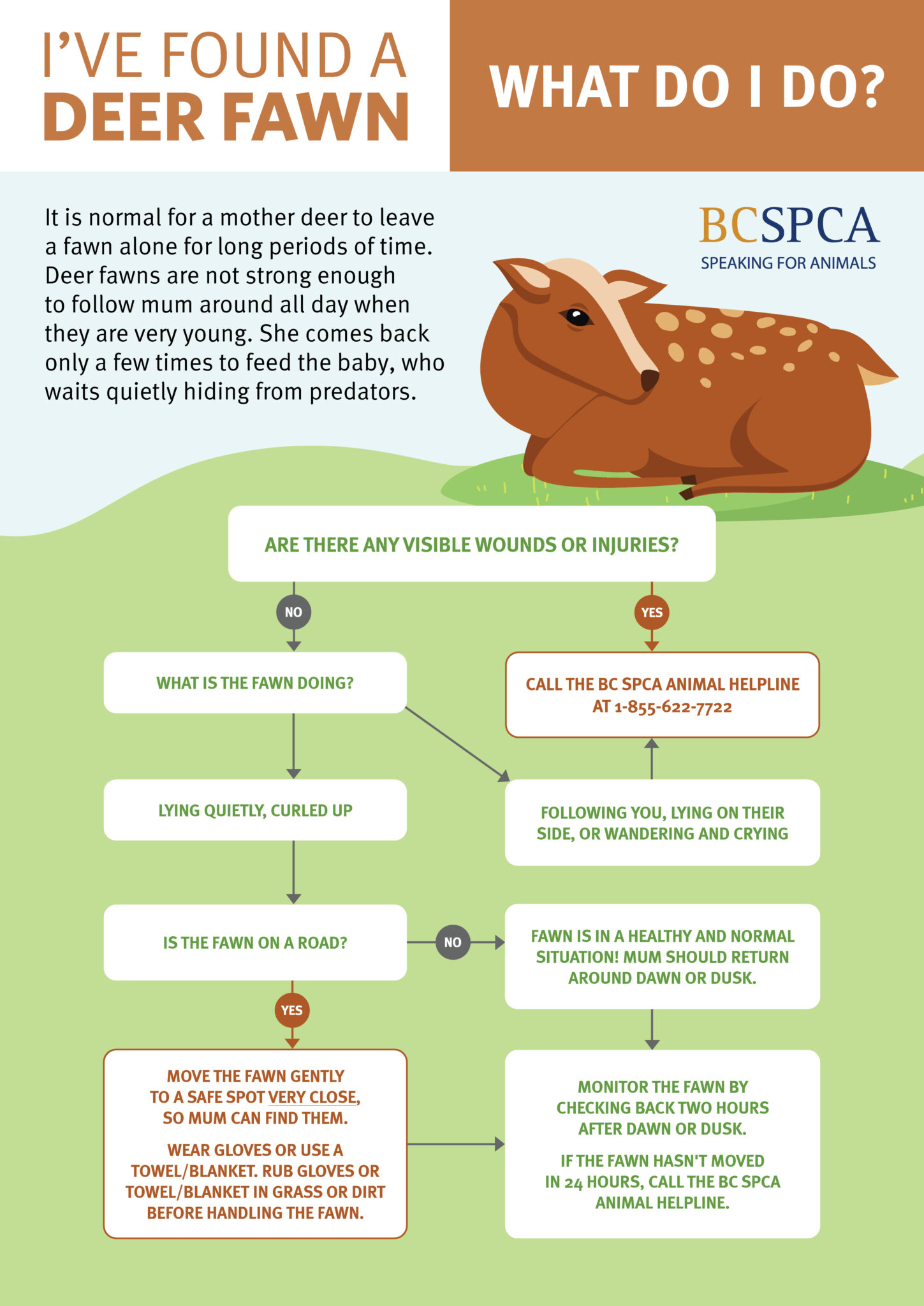
Helpful resource: wildlife.utah.gov [ pdf ]
Are Baby Deer Born without Teeth?
Baby deer are born with only 4 teeth on their lower jaw. During their first few months of life, they will also develop incisors and premolars. These are all baby teeth. By the time an animal is about 18 months old its baby teeth get replaced with permanent ones.
Can Baby Deer Walk Right Away?
The easiest question to answer is 'when baby deer start walking' - they do that straight away! In fact, they are running and hopping about. Clumsily, but they do. Fawns who are just born follow their mothers or trying to run in front of them. Then get tired and sit down. Then up and about again.
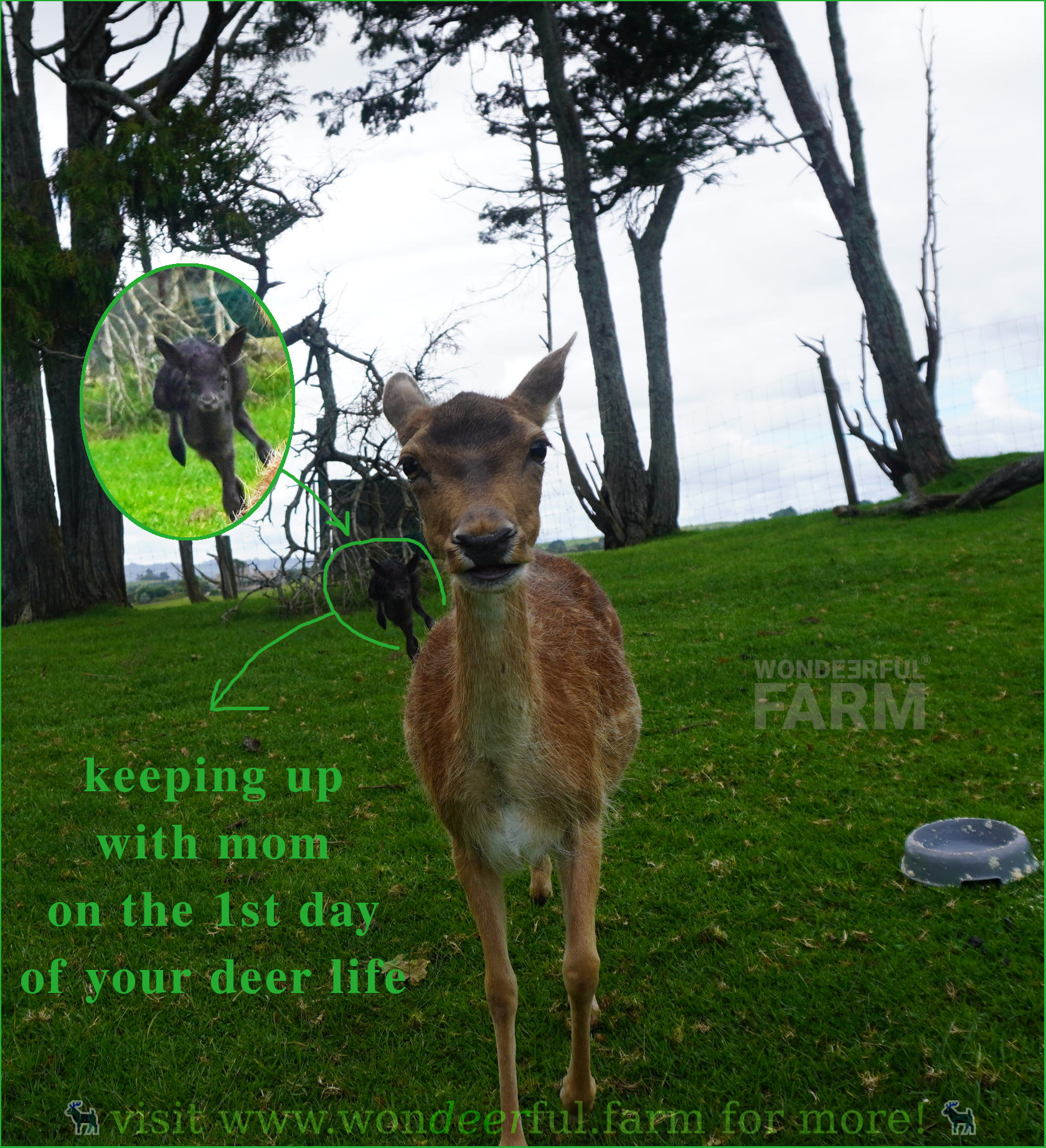
By the end of the first day the fawn will usually start spending most of its time lying down sleeping.
This is Charcoal and her mom Babushka on the first day:
Below is the picture of a short stroll Charcoal took with mother on day 2.
Impressive, that on day 3 of her life, Charcoal already knows how to groom herself:
When do Baby Deer Start Eating Grass?
A fawn will typically start browsing tender vegetation and learn from its mother what plants to eat as early as about 2 weeks of age. So technically it should be able to survive without a mother after it reaches 2.5 months as it is able to graze grass, browse vegetation and digest it. But its chances would be diminished the earlier it loses its mother.
Our fallow deer keep feeding their fawns for up to 10 months. This is how nature 'intended' things to be.
A fawn without a mother would be under a lot more stress to find adequate nutrition all by itself. Mother's milk provides a huge boost to their immune system. Behavioral aspect, of course, matters too. There's a lot a fawn can learn from its mother, 'tips and tricks' for each season.
Back to our fawn in spotlight, Charcoal. This is it on day 5, trying some dry grass. Not chewing and swallowing yet, just nibbling at the top of the mouth. 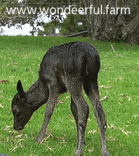
Are Baby Deer Born with Spots?
Yes, baby deer are born with spots, which act as camouflage helping fawns better bland in with the sun-dappled forest floor. For most of the day after they're born, fawns rest in their hiding spots and wait for their mothers to come feed them. Sometimes the best hiding place available is in plain sight in the grass. Even our guy Charcoal here has faintly visible spots, even though she looks all black from a far.
When do Baby Deer Lose Their Spots?
Fawns lose those spots at 90-120 days of age (3-4 months).
Some deer species, like our European fallow deer, retain their spots, and only when they grow their winter coats, spots disappear for the season.
Are Baby Deer Dangerous?
Newborn ones - hardly, but their moms can be. Even though deer prefer to avoid confrontation in most cases, when they feel threatened, sometimes they figure fight is a more suitable response than flight. Does typically become more aggressive when in the final stages of their pregnancy and after fawning, and continue in that state before the fawn is strong and quick enough to flee. So make sure to keep your kids and pets away from fawns just in case its mother is around.
If you're wondering whether you should touch a fawn the answer is no. Because fawns are naturally terrified of humans, and even if they're not trying to flee (they're too weak yet) you can be sure their heart rate is increased when you're simply approaching. Touching will not feel pleasant to a baby deer and will cause it a lot of stress, not to mention you'd leave your scent on the fawn which might endanger it.
This little fella, 4 days old on the next picture, is only dangerously cute!
Baby Deer Videos
Helpful resources
Fawn's first day (white-tailed deer) https://files.dnr.state.mn.us/mcvmagazine/young_naturalists/young-naturalists-article/fawns-first-day/mayjun2015_young_naturalists.pdf
Last modified 26 September 2023 at 04:49
Published 30 November 2022

Wondeerful Farm
Hi Ditsy Di,
Well, they occur if we bring about a black buck (melanistic).
Every year farm is visited by a new breeding stag (buck). Last year, for a change, we picked a dark brown one. So now we have quite a few black-coated fawns running around. They're looking nice!
Some still come out common color (light brown).
Whitey's (menil doe) fawn turned out common, just a tiny bit lighter than most.
It's all to do with genetics of each animal, some may carry recessive (hidden) genes of coat colors, other than their own, so when they pair with a partner who also got those same genes, that coat color may manifest.
Add your comment
More «Deer facts» stories
Do Deer Sweat? Do They Have Sweat Glands?
Today, we embark on an expedition into the quirky world of deer physiology to answer one of these burning questions: Do deer sweat, and do they have sweat glands?
read more...
Deer Gestation Period
Gestation period is the time during which a doe is pregnant. We look at the timing, duration and other facts about deer pregnancy and accompanying questions of rut and fawn birth.
read more...
 '
'
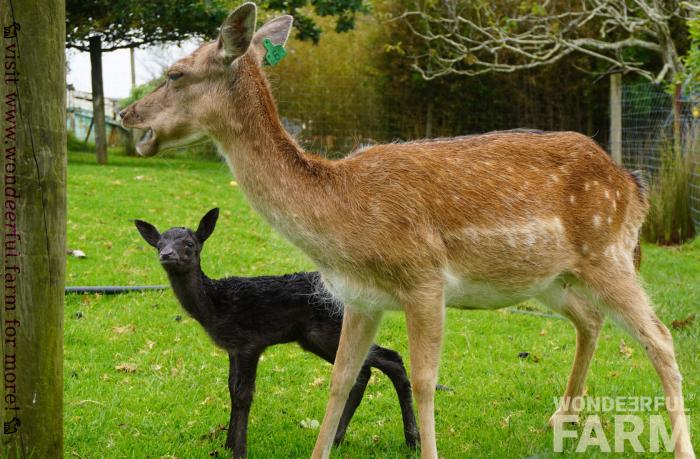
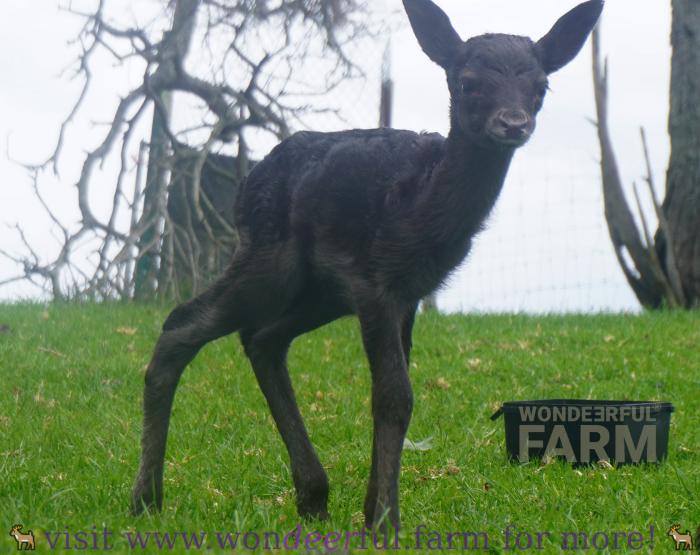
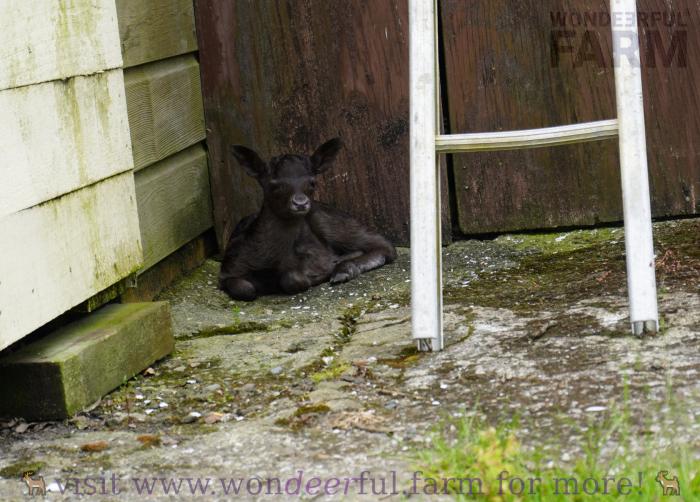
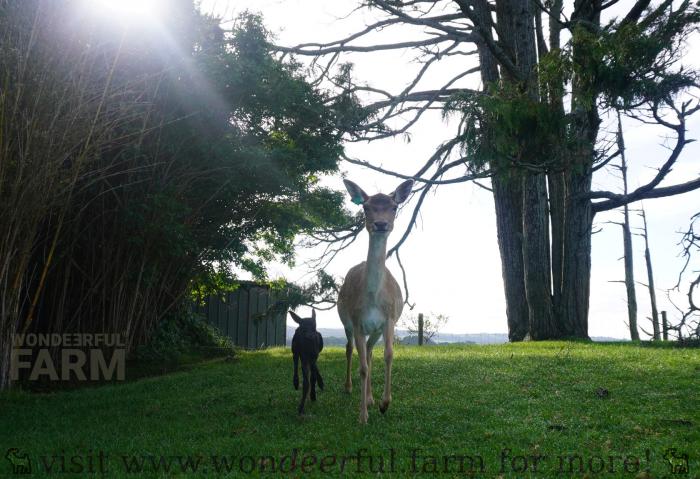
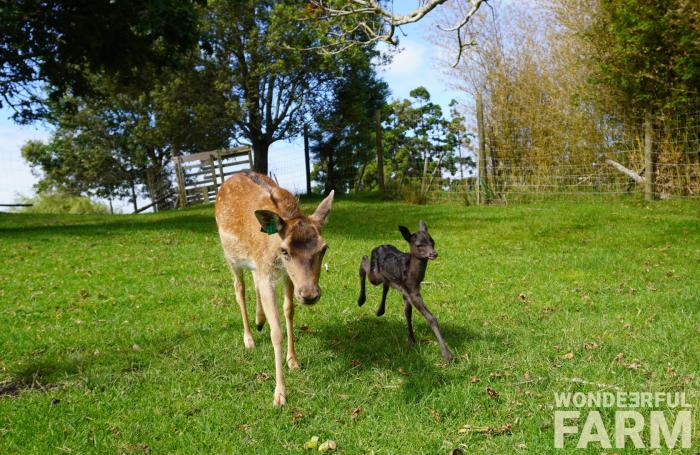
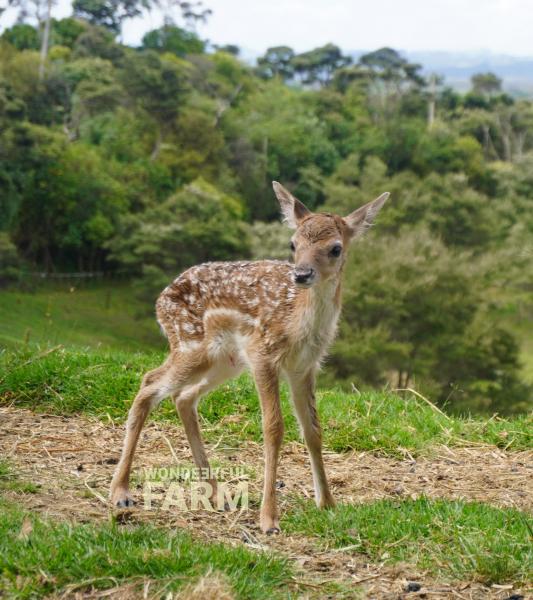
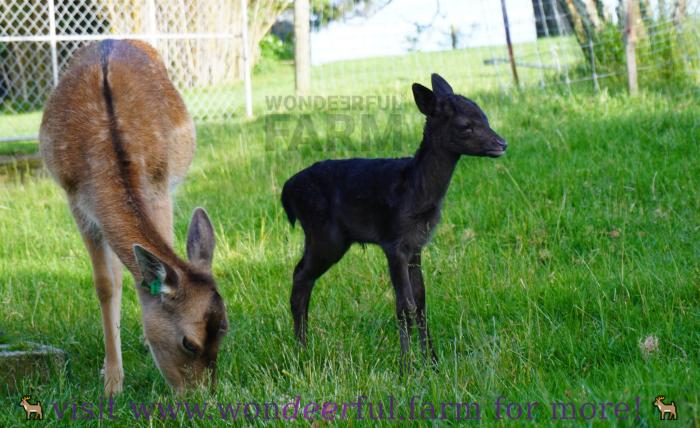
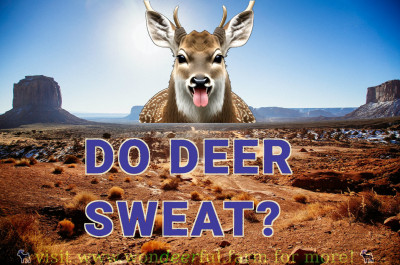
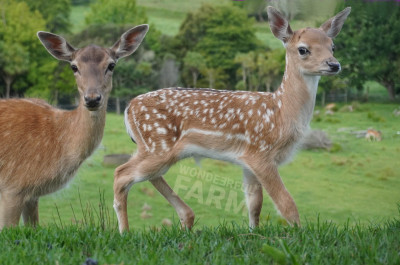
Ditsy Di 21-12-2022:
Could you tell me how often 'charcoal' fawns occur.
Do they produce charcoal young?
25%. 50% or just occasionally.
Colour genetics fascinate me